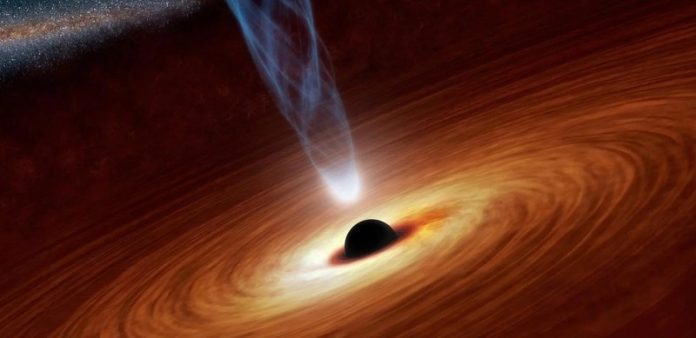
An immense object, termed as Sagittarius A*, is nestled in the heart of our Milky Way galaxy.
This cosmic beast, a “supermassive” black hole, is not an isolated phenomenon.
Scientists believe that most large galaxies, scattered throughout the universe, harbor these gargantuan black holes in their centers.
Joseph Simon, a researcher at the Department of Astrophysical and Planetary Sciences at CU Boulder, is working hard to decode the mysteries surrounding these elusive entities.
“Some of these black holes can be billions of times more massive than our sun,” said Simon.
Recently, Simon used computer modeling to estimate the masses of the largest supermassive black holes in the universe.
His findings suggest that these cosmic giants might have been larger on average billions of years ago than previously believed.
These insights could shed light on the processes that molded smaller black holes into today’s colossal ones.
Simon’s research indicates that the universe had a significant number of massive things early on. His study was published in The Astrophysical Journal Letters.
Besides this, Simon is also involved in a collaborative project, the North American Nanohertz Observatory for Gravitational Waves (NANOGrav).
This team has been looking for gravitational waves – the ripples in space-time – caused by the collision and merger of supermassive black holes in colliding galaxies. These cosmic crashes create gravitational waves that ripple across the universe, warping space-time as they travel.
But to comprehend these gravitational waves, scientists need to know the actual size of these supermassive black holes. Larger black holes will create larger gravitational waves, Simon explained. However, the lack of precise measurements for the masses of supermassive black holes in distant galaxies hampers the scientists.
In his latest study, Simon approached the problem innovatively. He gathered data on hundreds of thousands of galaxies, some dating back billions of years. Using this information, he estimated the black hole masses of the largest galaxies and then modeled the gravitational wave background that would have resulted from such galaxies.
The research presented an intriguing result – more large galaxies appeared to be present billions of years ago than previously assumed. This contradicted the common belief that it takes time for black holes to grow.
Simon’s findings join other pieces of evidence suggesting that supermassive black holes might not need as much time to grow as previously thought. He plans to extend his research, looking even further back in time, hoping to shed light on the evolution of our own Milky Way Galaxy and our solar system.
“Understanding the masses of black holes is not only vital for comprehending the gravitational wave background, but also to understand the growth of galaxies and the evolution of our universe,” Simon concluded.



